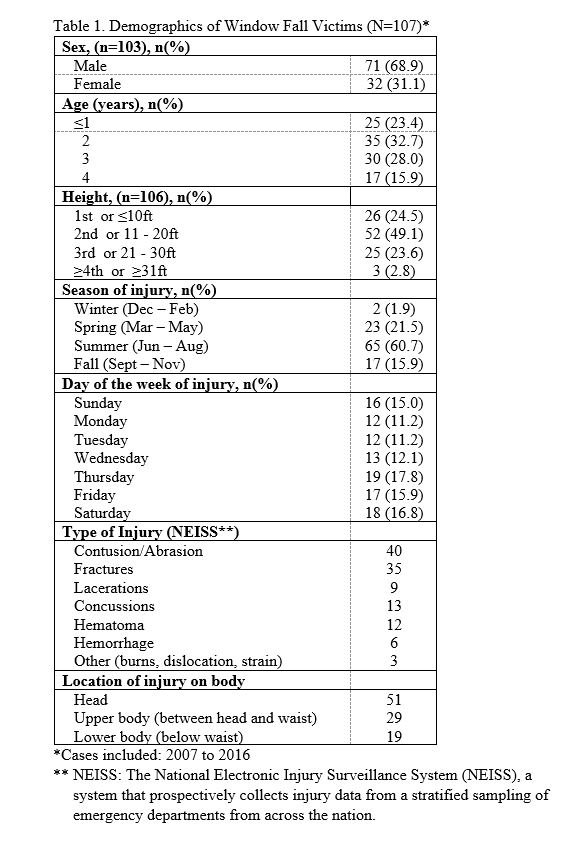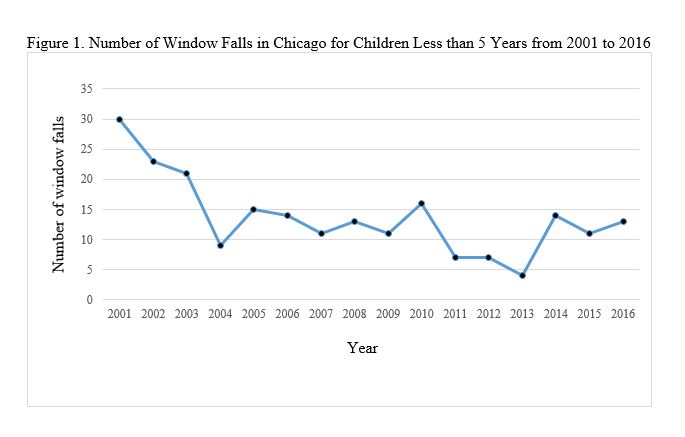Presenting Author:
Principal Investigator:
Karen Sheehan, M.D.
Department:
Pediatrics
Keywords:
injury prevention, window falls, pediatrics
Location:
Third Floor, Feinberg Pavilion, Northwestern Memorial Hospital
PH36 - Public Health & Social Sciences
STOP THE FALLS: An Initiative to Decrease Window Falls
Purpose: A preventable cause of unintentional injury in young children < 5 years is window falls. The STOP THE FALLS initiative, an education-based and product distribution campaign that encourages community-based interventions and partnerships, was created in 2002 to reduce the number of window falls in the city of Chicago. Citywide poster displays on public transportation, distribution of brochures, television and radio public announcements, health fairs, and press conferences were used to promote the safety message. Partnerships with aldermen, community agencies, and Housing and Urban Development clubs were developed for the distribution of information, such as posters and brochures, and sash stops/stoppers. Property managers were educated on window safety, and window guards were offered at half price to increase building safety. The goal of this study was to determine the impact of the STOP THE FALLS initiative on the occurrence of window falls. Methods: Children treated at a level 1 pediatric trauma center for injuries related to window falls in the city of Chicago between 2001 and 2016 were identified. Cases were included if they met the following criteria: fall occurred in the city of Chicago, fall was unintentional, and victim was <5 years old. Beginning in 2007, descriptive data were available for identified cases. Demographics and circumstances surrounding each window fall were described. Differences between years were assessed using independent t-test with a 0.05 alpha level. Results: Prior to the implementation of STOP THE FALLS, there were 30 window falls recorded for children <5 years in Chicago in 2001. Since the implementation of STOP THE FALLS in 2002, a total of 189 window fall cases were identified. Of the 189 cases, 107 cases were further analyzed given the availability of demographic information for each case beginning in 2007. The majority of cases were male (69%), between 2 to 3 years old (61%), fell from the 2nd story or between 11-20ft (49%), and occurred from June thru August (63%). The most common location of injury was on the head, and the most common types of injuries were contusions/abrasions followed by fractures. Overall, there was a significant decrease of window falls from 2001 to 2016 (p<0.0001), with year-to-year variation. Conclusion: Overall, the number of window falls in children < 5 years decreased after the STOP THE FALLS initiative was implemented. This finding suggests that the continuation of this initiative can be beneficial to further prevent the incidence of window falls in Chicago for children <5 years.


